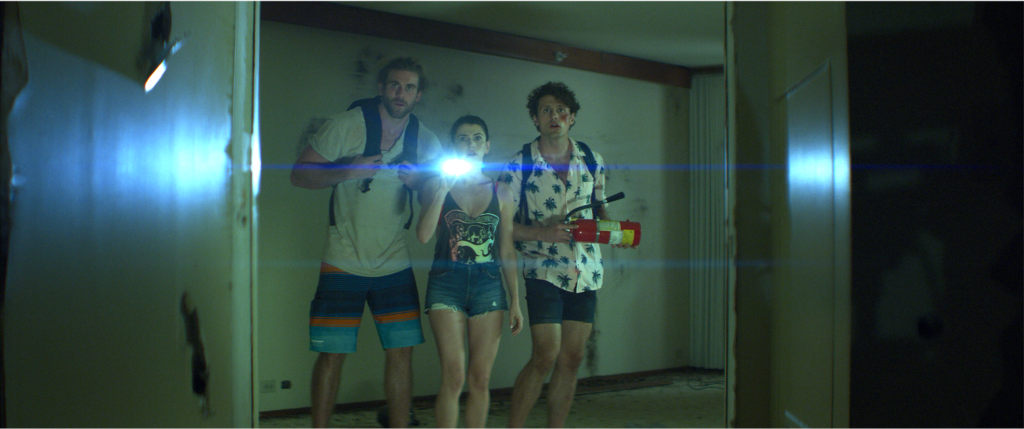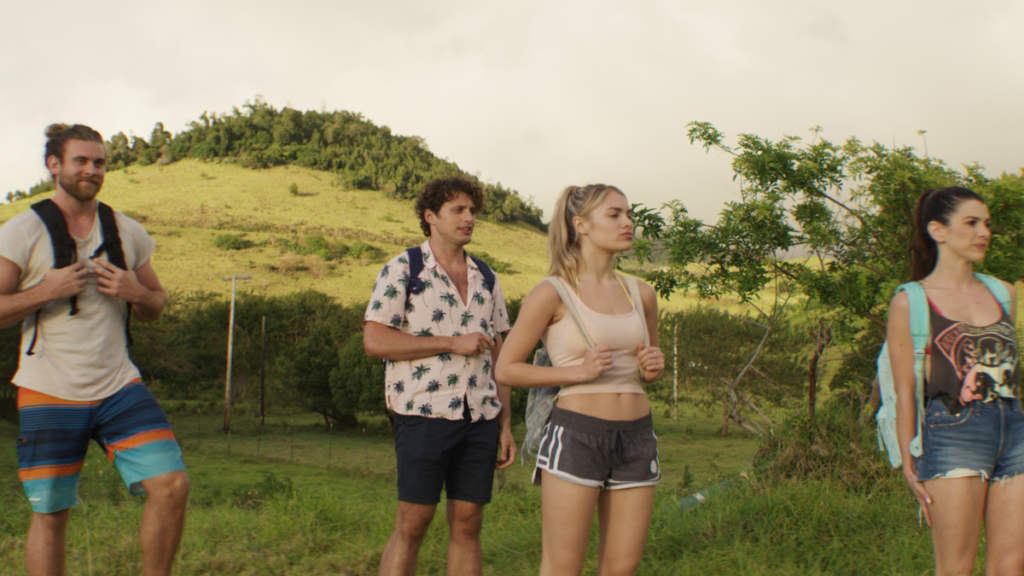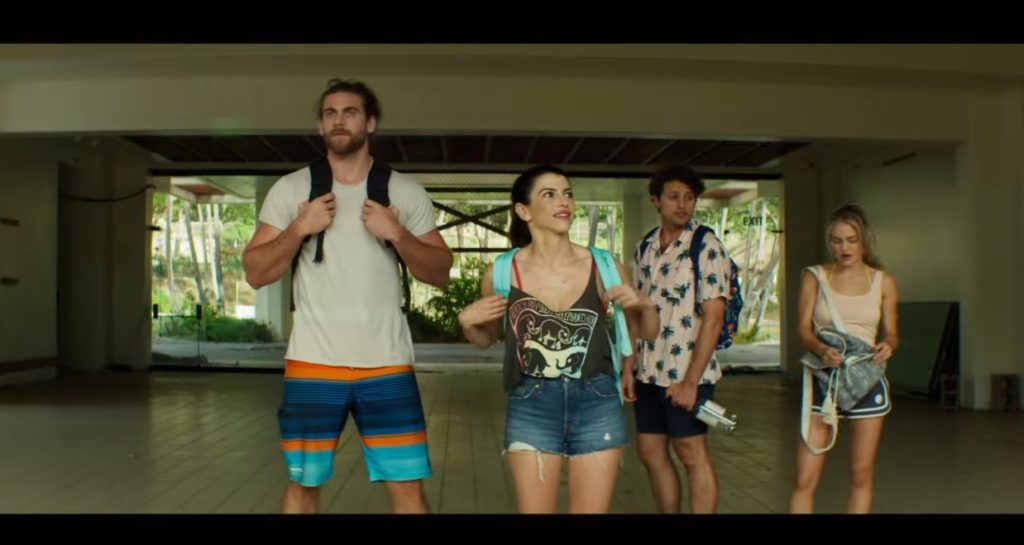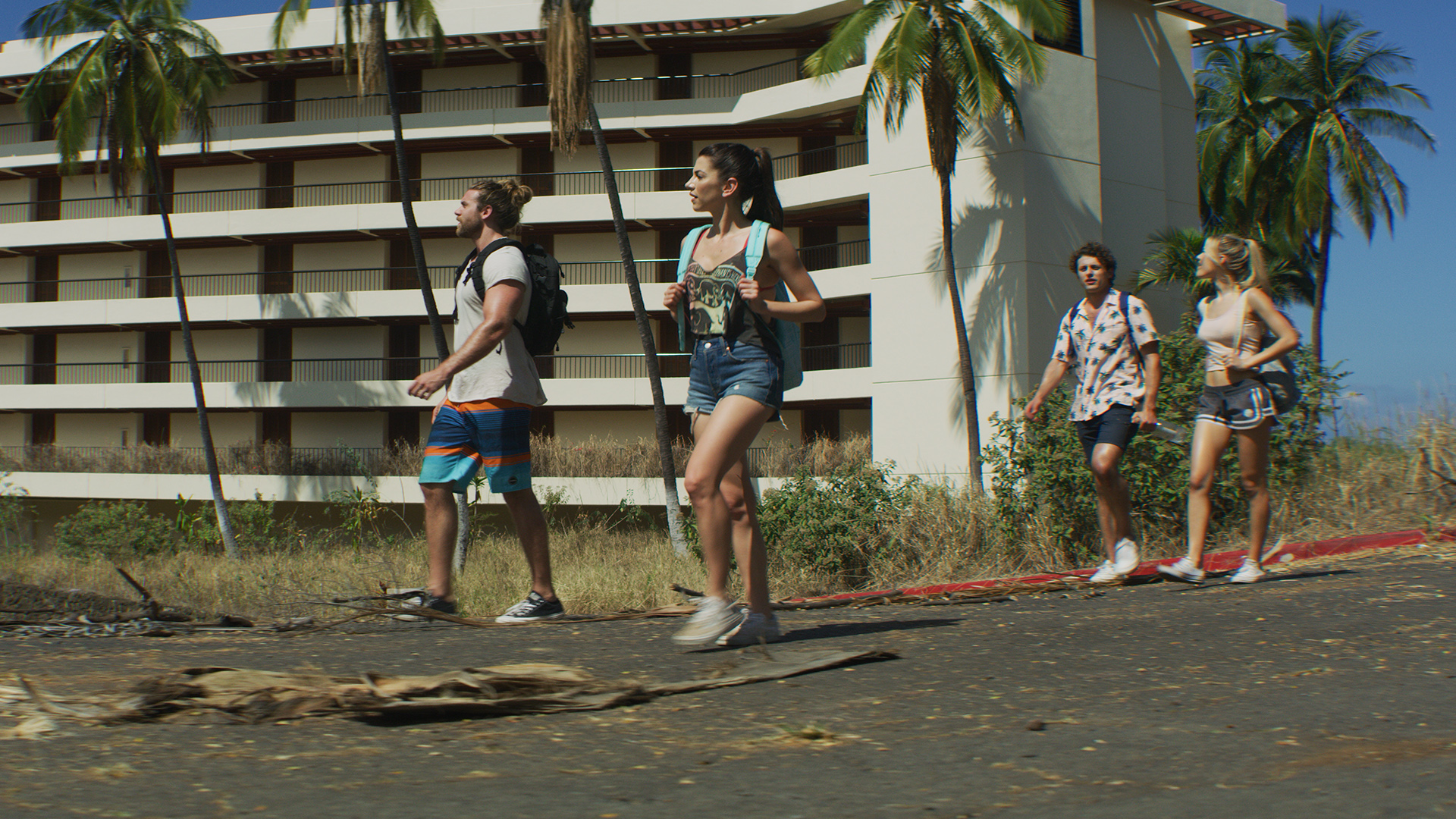The Resort has an excellent climax surrounded by disappointments. Somehow, at a mere 75 minutes, this movie still manages to be 70 minutes too long.
The climax of The Resort (2021) does everything right. The scene uses a well-executed blend of CGI and practical effects and features two gruesome, memorable deaths. While many low budget horror films use quick cuts and evasive editing to distract viewers from poor effects, here, the camera lingers confidently on the horrific imagery. Every element of the climax works. The editing is disorienting. The suspense is tangible. Even the color palette is vivid with intense reds and blues. As a stand-alone short film, this scene could win prizes.
Unfortunately, the rest of the movie is a disappointing bunch of missed opportunities.
Too Few Scares
Despite taking inspiration from a genuinely frightening source—urban exploration—outside of its clever climax, The Resort misses nearly every opportunity to be scary. This is too bad since the exploration of abandoned sites serves as the basis of so much excellent horror: movies like Grave Encounters, web series like Marble Hornets, short stories like Abandoned by Disney, and even real-world stories of people breaking into (or more legally) walking around in abandoned areas.
Although some setup is understandable, The Resort spends nearly half its runtime on getting to the titular resort. The cast first lands on the other side of the Hawaiian island, and instead of showing us frights, the camera focuses on the crystal-clear ocean, a cascading waterfall, and the slender bodies of the cast. These moments feel like tourism commercials and fail to build mood or atmosphere.
Horror inspired by urban exploration is often unique and tied directly into the setting. For example, in Abandoned by Disney, the horror is derived from abandoned zoo animals like pythons and decaying costumes. The Resort attempts this: the cast and crew supposedly found a creepy sheet hanging from a tree that might sort of look like a ghost, and this is integrated into the film. But this scene doesn’t go anywhere. The sheet never moves while the actor’s backs are turned to indicate the presence of actual ghosts, so all we get is a scene of people getting scared by a sheet. Even when the cast enters the resort, the setting remains mundane. Most of the scenes take place in the basement or in empty corridors—not exactly uncommon sights. It’s a missed opportunity to capture genuine and unique thrills.

Bland Characters
Given the strength of the climax, better written characters could arguably have carried the film, even through the slower sections. Alas, the characters are thinly sketched: we have Lex, a writer; Bree, who loves Instagram; Chris, a muscular guy; and Sam, a man who loves clowning around. The latter is the most memorable character due to his skepticism, which he’s clearly playing up to seem less scared, and his occasionally amusing jokes (in one scene, he spills his drink in his bag and is forced to eat a tequila soaked sandwich for lunch.)

Ostensibly, Lex is the protagonist, but she never grows as a character or learns anything other than visiting haunted places is a bad idea. As a white woman who loves writing, I would have expected to feel represented by her, but even though Lex is said to be a writer, we never actually see her write anything onscreen. She has traveled by plane and by helicopter to see an abandoned resort to gain inspiration for her book, yet we never learn about her personal connection to the material. A writer protagonist can lead to insightful and artful narration, like Mia Wasikowska’s protagonist in Crimson Peak, but Lex’s narration doesn’t provide much we couldn’t infer from just watching the movie.
A Lack of Diversity
The Resort misses another crucial opportunity by neglecting diversity. Despite taking place in Hawaii, a state known for its racial diversity, The Resort focuses almost solely on a group of white tourists. Local residents are limited to bit parts: a humorous helicopter pilot, a couple of guards left for dead, and, of course, the vengeful ghost herself. The film takes place on the made-up island of “Kilahuna,” a name intended to sound vaguely creepy and vaguely Hawaiian. According to the film’s lore, locals avoid saying the name (no surprise given how mangled the word sounds).
Ultimately, The Resort suffers most because it is a film driven by wants rather than needs. The characters are killed, in part, because of Lex’s selfishness: first, they plan a trip around her desire to break into an abandoned resort, and then they stay on the island past sundown because she forgets her backpack and demands they return for it.

But what if instead, the desire to explore the resort came from a need rather than a want? What if, instead of focusing on white tourists, the film instead focused on a more diverse bunch of locals who needed to explore the resort? What if, instead of going back into the resort for a backpack, the group was forced to search the resort for a missing friend or relative? At the very least, it would make so much more sense for someone whose family lived in Hawaii for decades or even centuries to explain the island’s legends and lore to the audience, instead of making the plot grind to a halt so they can explain the lore in a YouTube video.
Final Thoughts
At least The Resort had those perfect five minutes at the climax. Although in the end, there is one final good lesson viewers can take from this film. Visiting abandoned locations, if done respectfully, carefully, and legally, can be a whole lot of fun. But if locals say a site is off-limits due to its spiritual or historical significance, it’s probably best to stay away. And given Hawaii’s current struggles with water scarcity and Covid-19 outbreaks, tourists may be better off avoiding resorts in general.

Comments